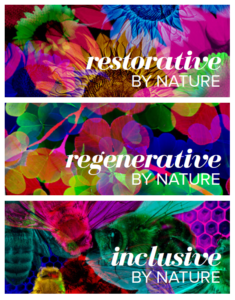Read on for a Q&A with Sarah Simms who joined Gong in 2009 to lead its new financial services arm, including emerging markets private equity manager client, Actis. She left her full time role with Gong in 2014, having grown the FS stream from one client account to over a dozen. She now works in Somerset in the education sector, but has stayed in close contact, freelancing with Gong at various points over the years.
How did we first meet you?
I had just come back from a six-month sabbatical, travelling around India and south east Asia. Having previously worked for five years in financial PR, I was eager to return to agency life. Gong was one of the agencies that a recruitment agent highlighted for me as matching my key criteria for a new role.
What was it about Gong that appealed?
At the time, I was having lots of discussions with agencies of various sizes and ambitions, so had the benefit of being able to contextualise and compare Gong to other opportunities in the market. Gong’s vision for growth and its clear sense of identity really stood out to me. In the role I was being recruited for, there was lots of responsibility to stretch and prove myself, while also being part of a very impressive wider team.
What were your most memorable experiences of Gong?
Certainly, the speed of working at high professional standards was a constant from the start. But the genuine warmth of feeling we experienced with our clients – particularly the empea, AVCA and Emerging Capital Partners leaders – stays firmly in my memory. It was a great joy to be trusted advisors to such change-making teams, that were (and continue to be) making such a positive impact on an international stage.
I was also working at Gong when we launched Gong Kenya, building on our expertise and connections in east Africa. It was a (well researched) gamble at the time but one that most certainly paid off, with repeat clients including DFIs, the British Council and many professional services companies on the roster.
What did you bring to the business over and above client service?
I have always enjoyed the opportunity to nurture junior members of the account teams and relished the responsibility of guiding them in their professional development. Team collaboration and daily learning is one of the great benefits of agency life that is not often spoken about, but ought to be. Daily feedback on work and the opportunity to soundboard ideas are such a huge benefit to personal growth. And of course, it works both ways, with senior leaders getting ideas from ambitious juniors too.
Did you travel for work?
Yes, regularly – to Washington, but also to Nigeria, South Africa, Ghana, and Tunisia for client work, very often to cover comms at industry events. It was a great honour to be able to hear cutting-edge issues discussed by industry experts, first-hand. And to play a part in shaping the important messages that came out of those events on an international stage.
Travelling for corporate events was also a great lesson in thinking on your feet. As with all event management, it involves plenty of last-minute plan changes and combined with the logistical restrictions in some of the locations that we worked in, called for a fair amount of lateral problem solving.
What advice would you offer to others starting in the PR industry?
Be a sponge! Being a PR professional provides access to conversations that would otherwise be happening behind closed doors. To do the job well, it requires a curiosity and appetite for learning that will broaden your horizons and expand your mind set. You will learn to question what you hear and what you read, which is so essential with the news agenda today. Be humble and learn from your seniors – but don’t be afraid to voice your opinion or idea (particularly if you can back it up with evidence). A successful professional environment such as Gong’s will act as a meritocracy and applaud you.
Did working at Gong help crystallise what you wanted to achieve in your career?
It helped me to identify how important a clear business identity and strategy is, not only in terms of financial success, but crucially, for recruitment and HR. Gong’s strong sense of purpose (notably as a B Corp) focuses all of its employees towards a common goal, which engenders a sense of pride in the work done, too. Everyone feels a crucial part of the team (as they are!). This is an integral factor in the education sector too, so it’s certainly something that I’ve brought with me into the next chapter of my career.
Other memorable experiences?
Most of Gong’s Christmas parties were a tour de force – often in unusual locations (once, we ate sitting on hay bales, another time we watched cabaret in a big tent, another time we were at Soho House), but always full of fun and laughter that will always stay with me. I had some great nights out with colleagues at Gong. I should probably also mention that founder Narda Shirley played a huge part in setting me up with my now husband, who was the brother of a good friend and business partner of hers. An unusual, but effective way of cementing an already extremely strong company loyalty from me – it’s been a pleasure to stay in touch with Gong over the years, witnessing it go from strength to strength more recently with its exciting merger with Cherish PR.
Sarah Simms is Director of Marketing and Development at Sidcot School, an independent day and boarding school for girls and boys aged 3-18, which encourages children to make a difference in the world through teaching them to live their lives adventurously, to question and to take action.
















